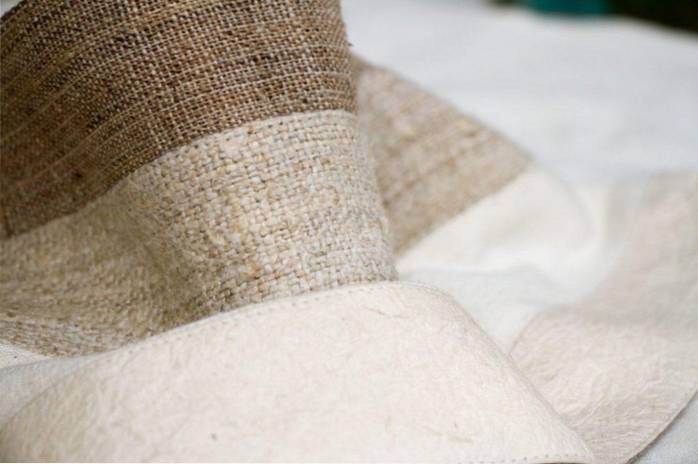
The 12 Most Common Textile Plants

The textile plants are those plants from whose product threads can be made that allow them to be spun and woven to make fabrics and textiles. The origin of natural fibers revolves around cellulose.
Cellulose is a naturally occurring biopolymer that makes up most of the earth's biomass. It is commonly known for being a constituent element of paper and cardboard.

Depending on the plant, the fiber can be obtained from the fruits, seeds, stem or from the leaves themselves..
There are paleontological records dating back more than 30,000 years in which rudimentary fabrics made from flax, a plant used today for the manufacture of fabrics, can be appreciated..
In the same way, in Mexico pieces with more than 5000 years old made of cotton have been observed.
Most important textile plants
1- Linen
The stem of flax is used for the production of threads and fabrics. It began to be used in Çatalhöyük (modern Turkey) and from there it went to Egypt, where it was used to wrap mummies.
It was widely used in Europe until the 17th century until cotton became known. It is currently used in summer garments because it is a cool fabric. It is also used in sheets and tablecloths, and is considered luxury.
2- Cotton
It is made from the capsule of cotton seeds (of the genus Gossypium). When these seeds open they show their fibers, which are ideal for making yarn..
It is made of almost pure cellulose, white or pale yellow in color, and is widely used today in shirts, underwear, jeans and towels.
3- Jute
A fiber is extracted from the bark of jute that is currently used for rudimentary fabrics, such as those used in sacks and cords.
It is yellowish or brown in color, depending on the origin and treatment.
4- Agave
Both sisal and henequen are plants of the agave family, the same one with which tequila is made in Mexico.
From its leaves a strong fiber is obtained mainly used for rope making due to its resistance.
5- Miraguano
It can be spun to mix with other fibers, due to its ability to puff up and its lightness. It is also used as a filler.
6- Esparto
From the esparto leaves, a coarse fiber is obtained, similar to that of jute, used for decoration, crafts and the manufacture of espadrilles..
7- Ramie
The bark of the ramie stem produces a fiber used in textiles in combination with cotton and wool..
It tends to be used in combination with a stronger one due to its weakness and difficulty in spinning..
8- Coir
Coming from the coconut shell, it is used mainly as a filler rather than as a textile base, although rudimentary fabrics such as carpets can be made with a coir base..
9- Kapok
The ceiba or kapok is similar to cotton in origin, although its fiber has less cellulose and is used mainly as a filling for cushions and life jackets.
10- Hemp
It is used to make canvases that serve as a support for painting. It is also used for the manufacture of bags and packaging parts.
11- Wicker
Natural fiber normally obtained from willows, a family of trees. Thick and resistant material, used for sacks, hats, bags, mats or decorative items.
12- Raffia
Coarse fiber that can be obtained naturally from plants of the Raphia genus or made synthetically. It is ideal as a substitute for jute and is mainly used for the textile and rope industry.
References
- Marina Vaptzarova - Sustainable Natural Textiles marinavaptzarova.com
- BBC - GCSE Bitesize: Natural fibers bbc.co.uk
- Wikipedia - List of textile fibers en.wikipedia.com
- Wikipedia - Tissue materials en.wikipedia.org
- Study - Natural Textile Fibers study.com
- Natural Fibers - Fibers from the nature textileschool.com



Yet No Comments